It Seems Like They're Everywhere
Two of the most abundant organisms I've seen in McMurdo Sound are sea stars and sea urchins. On our recent dives, it seems that they are everywhere. They are so commonplace that it's easy to forget what amazing animals they are and how they have adapted to the Antarctic benthic habitat.
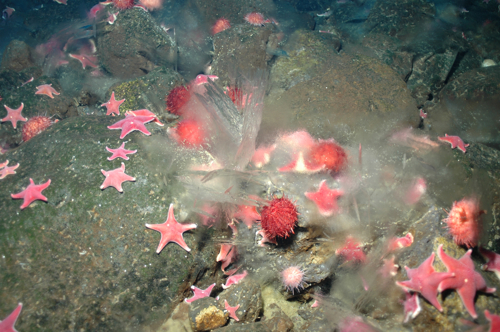
Related
Sea urchins and sea stars are related organisms, found in the phylum Echinodermata. As a result they share many similarities and also some important differences. Dr. Marsh has worked with both of these species in the past. They are fascinating animals and we have a lot of respect for the roles they play in the ecosystem.
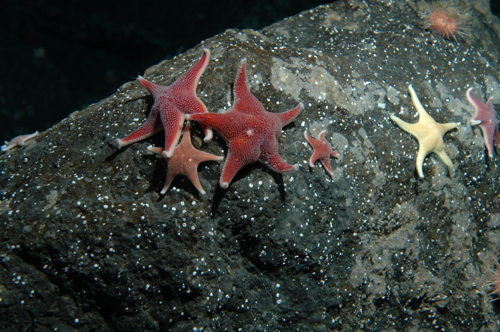
Classification
We organize organisms into different groups based on similarities and differences with other organisms. Here's how we classify (organize) the sea star, Odontaster validus and the sea urchin Sterechinus neumayeri.
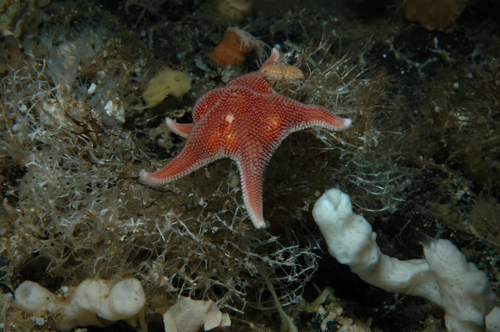
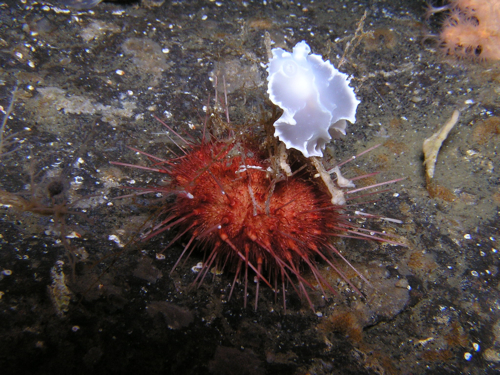
| Classification | Odontaster validus | Sterechinus neumayeri |
|---|---|---|
| Kingdom | Animalia | Animalia |
| Phylum | Echinodermata | Echinodermata |
| Class | Asteroidea | Echinoidea |
| Order | Valvatida | Camarodonta |
| Family | Odontasteridae | Echinidae |
| Genus | Odontaster | Sterechinus |
| Species | validus | neumayeri |
Adaptations
Most sea stars possess five arms; although several species have six or more arms. Many species of sea star have the ability to regenerate (or regrow) an arm that has been lost. This is an interesting adaptation and you often see sea stars that have one arm that is shorter than the rest, indicating that the shorter arm is in the process of regrowing.
If you turn a sea star over, all along the bottom of its body you will see hundreds or thousands of these tiny tube feet. Sea urchins have the same structures. These are the way sea stars and sea urchins move around. In fact, these animals pump water into these tube feet to extend them and pump water out to create small empty spaces (vacuums). This allows these organisms to both extend their tube feet and also to get them to attach to surfaces.
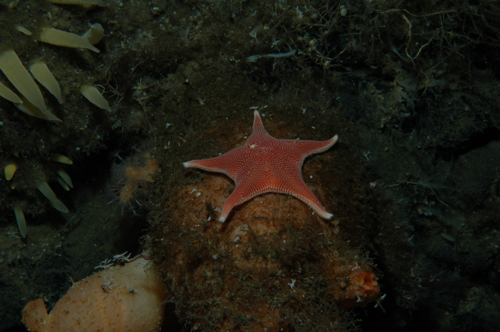
Odontaster validus is an omnivore, meaning that it eats both other animals and plants. It also plays an important role in breaking down the waste of other organisms in the ecosystem. One interesting adaptation involves how it actually digests food. Many species of sea stars have the ability to eject their stomach from their body and digest food outside its own body. This allows the sea star to eat prey that are much bigger than its mouth (which is on its underside). Once the prey is partially digested, the sea star brings its stomach back into its body along with the partially digested food.
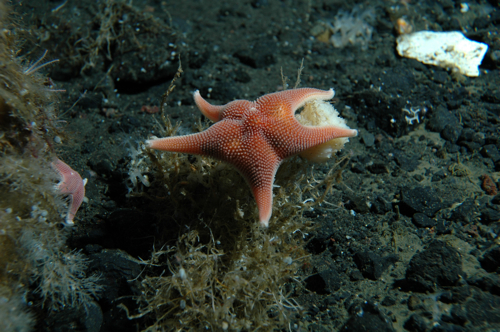
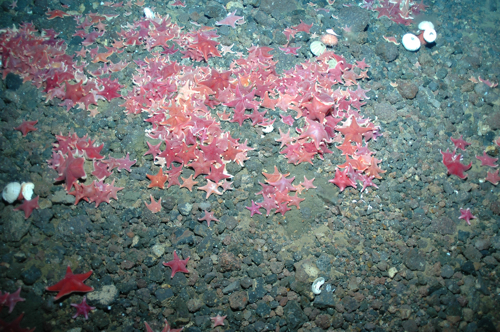
Sterechinus neumayeri is largely an herbivore, about 50% of its diet being algae. It will also eat worms, sponges, and diatoms. It competes with Odontaster validus and so is often found in the same areas. If you flip a sea urchin over, you will see its mouth in the center, consisting of five little teeth. These teeth form a sort of sea star shape and were first described by the famous Greek scientist Aristotle, and are therefore named Aristotle's Lantern.
In addition to the adaptations already discussed, sea urchins possess spikes all over its body. These spikes severe a defensive purpose, meaning to deter other organisms from eating the sea urchin. You wouldn't want to swallow something with all those spikes, would you?
Sea urchins are also known to decorate their spikes with material they found on the bottom. They might use a piece of seaweed or some old clam shells. This form of camoflague is very purposefully done and is a strategy we say in our "Adaptation Challenge". You can see urchins trying to blend in by decorating with clam shells in the photo below.
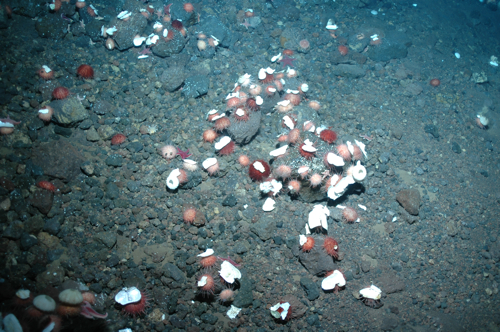
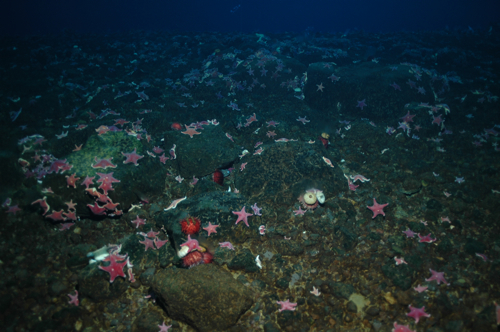


Comments